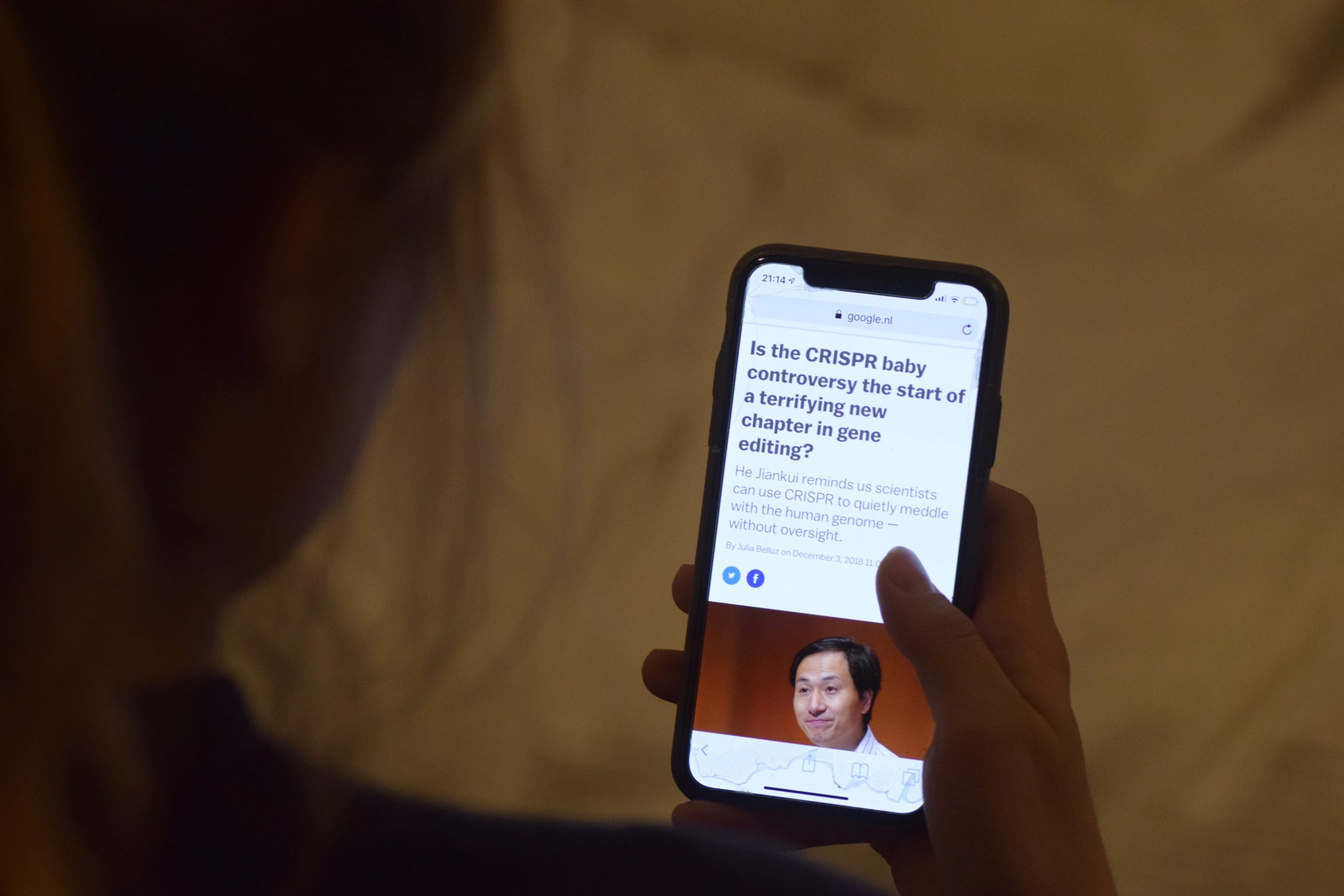Fiddling with genes in human embryos with CRISPR-Cas9, as was recently done in China, is dangerous. In a recent article, Delft researchers describe what can go wrong.
Promising as the CRISPR-Cas9 technique is, it can also result in dangerous unwanted mutations in a cell’s DNA, or so Delft scientists discovered. (Photo: Florence Warren)
Promising as the gene editing technique CRISPR-Cas9 is, it can also result in dangerous unwanted mutations in a cell’s DNA, or so Delft scientists discovered whilst working on beer yeast. Their work has implications for humans as well. They are sounding the alarm, just a few weeks after a Chinese researcher announced to the world that he altered the DNA of a human embryo.
Biotechnological progress has sped up in recent years due to the discovery of the gene editing technique CRISPR-Cas9. Using this RNA protein complex derived from bacteria, biotechnologists can target and cleave specific strands of DNA in other organisms. The technology had been used to inactivate genes in human cells, to fight illnesses, to modify yeasts used to make biofuels and to genetically modify crop strains. And recently also to modify genes in human embryos. A bold move, many scientists say.
In November 2018, Jiankui He, of the Southern University of Science and Technology in Shenzhen, announced that he had edited two human embryos in an attempt to disable the gene for CCR5, which codes for a receptor that HIV uses to enter cells. He said that twin girls, Lulu and Nana, had been born a few weeks earlier.
‘This work is unethical’
“This work is unethical,” says PhD candidate Arthur Gorter de Vries, “because the genetic modification was medically unnecessary, and because we don’t yet know enough about the possible side effects of the technology to apply it to human embryos.”
As it turns out, Gorter de Vries and his colleagues at the Faculty of Applied Sciences in Delft, found that if CRISPR-Cas9 is used incorrectly, genetic information can be lost. As a result dormant genes may become expressed, for instance genes that can cause cancer.
Gorter de Vries, who is the first author of a recent publication in the journal Nucleic Acids Research, which includes guidelines on how to edit DNA more safely, tumbled upon his discovery by pure chance when he was doing research on beer yeast.
Doing research on beer yeast
“I was trying to determine how the domestication of brewer’s yeast ultimately led to the modern strains of yeast that beer brewers now use. I was using CRISPR-Cas9 to remove a certain gene in order to determine its function. Strangely, I could not confirm that I had successfully removed the gene. I also noticed that the cells were behaving erratically.”
Gorter de Vries was targeting only one of the chromosomes in his yeast. Further experiments proved that the yeast cells were using the other copy of the targeted chromosome as a template to repair the DNA that he had been trying to remove. A sound natural repair reflex of an organism, you might think. However, this natural repair mechanism, that we humans also have, can result in the loss of large amounts of genetic information of the targeted chromosome when using CRISPR-Cas.
Like those of many organisms, human cells contain two copies of each chromosome: one from each parent. These chromosome copies are identical except for small differences in a number of genes. These small variations lead to the genetic differences between individuals.
When CRISPR-Cas9 is used to target a single chromosome in heterozygous organisms such as humans, a natural repair mechanism is activated. This mechanism often uses the other copy of the chromosome as a template for repairing its DNA.
Normally, gene editing experts using CRISPR-Cas9, can change part of the genome of a cell by introducing a new sequence of DNA. The Cas protein cuts open the DNA at a targeted spot, after which the cell is expected to repair its DNA using this new string of genetic material. Thus, new genes can be introduced. Of course, when the repair mechanism uses the other chromosome as a template instead of the newly introduced string of DNA, the editing will not be successful.
‘The trick in humans will be to target both chromosomes’
Since repair using the other chromosome is far more efficient, repair using the intended DNA fragment almost never occurs. Usually, when biotechnologists work with organisms such as plants or yeasts, the process to obtain the organisms with the desired mutation simply takes more time and effort.
However, this inefficient gene editing can lead to the loss of heterozygosity, which can have serious health consequences. Disease-causing genes such as those causing cancer, that were dormant (so-called recessive alleles), may become expressed. If plant cells develop cancerous growths, that is no big deal. But if you use the technology on human embryos, it is a whole different ball game.
The natural repair mechanism that can cause this havoc only becomes active if just one chromosome is targeted for editing and not both. “So the trick in humans will ultimately be to always target both chromosomes simultaneously, even when only one needs to be modified,” says Dr Jean-Marc Daran, who supervised the project.
Gorter de Vries, A.R., et al. Allele-specific genome editing using CRISPR–Cas9 is associated with loss of heterozygosity in diploid yeast. ‘Nucleic Acids Res. 2018



Comments are closed.